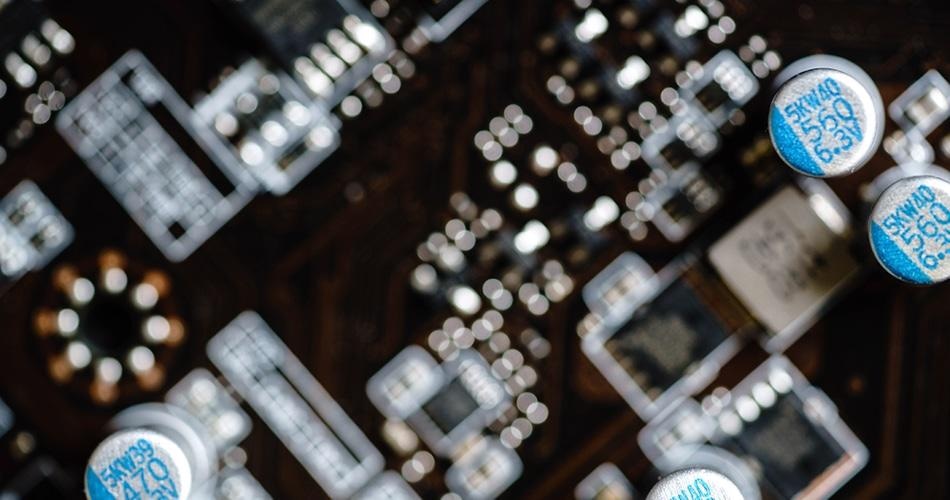
Image Credit: klom/Shutterstock.com
Operating electronics with light is so far only a scenario in a science fiction film. Now researchers from Nagoya University have discovered a photodielectric effect in a ceramic material, which is a significant advancement in the development of photo-capacitors, circuit components that can control the current in an electric circuit by shining light onto them.
Photo-Capacitors Need to Remain Insulating
The researchers around principal investigator Hiroki Taniguchi published their finding, which represents a significant step forward in the development of photo-capacitors, in the journal Applied Physics Letters.
A capacitor is a storage component for electrons in electric circuits. In the simplest case, a capacitor is composed of two conducting plates with an insulating (also called dielectric) material in between.
When voltage is applied to the capacitor, charges build up between the plate. If one instead wants to use light to operate the capacitor, the incoming light needs to regulate the so-called dielectric permittivity of the medium between the plates.
The dielectric permittivity determines how well a material can resist an electric field, and it is the property that determines how much energy the capacitor can store.
Previously, researchers have been able to control the permittivity by increasing the electrical conductivity of the dielectric, which in turn lead to a greater dielectric permittivity. This is also referred to as extrinsic photodielectric effect.
However, this type of extrinsic photodielectric effect is not suitable for practical applications, as Taniguchi explains. This is because a capacitor needs to be a good insulator meaning it needs to prevent current from flowing.
Intrinsic Photodielectric Effect in Ceramic Material
Taniguchi and colleagues have now overcome this issue. “We have demonstrated the existence of the photodielectric effect experimentally”, Taniguchi says. In their study, they used the ceramic material LaAl0.99Zn0.01O3-d, which they synthesised from lanthanum oxide, zinc oxide and aluminium oxide. To verify the exact composition of the synthesised ceramic, the researchers used a method called X-ray diffraction (XRD) and a Rigaku RINT-2200 diffractometer.
In this method, X-radiation is used to probe the material: the beam scattered from the atoms of the material contains important information about the structure and composition of the material.
In a following experiment, the scientists shined light from a light-emitting diode (LED) onto the synthesised ceramic, and measured the dielectric permittivity.
They found that the dielectric permittivity increased while the material maintained its insulating properties, in contrast to previous experiments. This means that the increase in permittivity is not because of an increase in conductance, and that an intrinsic instead of an extrinsic photodielectric effect is the cause for the observation.
Are Defects Responsible for the Insulating Properties?
The researchers still don’t know how the intrinsic photodielectric effect works. But according to Taniguchi, it may have to do with defects in the material.
Defects are positions in a material, where the crystal structure, meaning the periodic arrangement of atoms, is not perfectly regular. Some atoms might be closer to each other or further apart than the majority.
When the incoming light excites electrons to higher energy states, the electrons might get trapped in the defect position, which limits them from travelling far. Without being able to travel through the material, the electrons cannot cause a current, and the material can remain insulating.
This hypothesis still needs to be proven. Further research is also needed for making the light-controlled screen become reality. Nevertheless, the discovery by the research team is a significant step in the right direction.
“A photo-capacitor provides a novel way for operating electronic devices with light” summarises Taniguchi. “It will push the evolution of electronics to next-generation photo-electronics”. Future studies may look into how to enhance the effect even more, possibly using new materials.
References and Further Reading
- T. Nagai et al. (2017) Optical control of dielectric permittivity in LaAl0.99Zn0.01O3-d. Appl. Phys. Lett. 110, 172901, doi: 10.1063/1.4979644.
Disclaimer: The views expressed here are those of the author expressed in their private capacity and do not necessarily represent the views of AZoM.com Limited T/A AZoNetwork the owner and operator of this website. This disclaimer forms part of the Terms and conditions of use of this website.